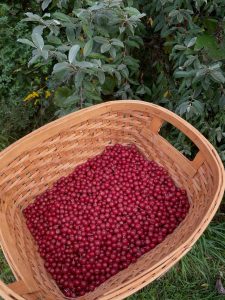Page Created by Connecticut Foraging Club
Upcoming Events | Meet the Instructors | Plant Archive | Mushroom Archive
----------------
Upcoming Events | Meet the Instructors | Plant Archive | Mushroom Archive
----------------
Mugwort (Artemisia vulgaris L.) is an invasive perennial plant that came from Europe.

Mugwort can be found in fields, roadsides, and woodland edges that have partial to full sun. Its rhizomes exude a chemical that discourages growth of other plants. This allows mugwort to take over entire fields.
Mugwort leaves have a green upper surface and silvery undersurface. The plant has a sage-like scent when crushed. It produces tiny gray-green flowers from mid-July to late-September. The plant can grow up to 5 feet tall.

Early spring is the best time to forage mugwort leaves for culinary purposes. Mugwort is best used as a seasoning. It has hints of sage and rosemary with a little bit of bitterness. Mugwort is used to flavor soba noodles and mochi. It has also been used to flavor beer, similarly to how hops are used.

Mugwort leaves can be collected summer-fall to make a medicinal mugwort tea. The plant has been used medicinally to stimulate menstrual flow, promote sleep, and calm nervous tension. It is also taken to encourage the elimination of worms.

Continuously pulling/removing leaves from mugwort could eventually exhaust the root system. This may help to control the spread of this invasive plant.
--
Written by Amy Demers, founder of the Connecticut Foraging Club. To learn more about foraging in Connecticut, check out our upcoming classes.






